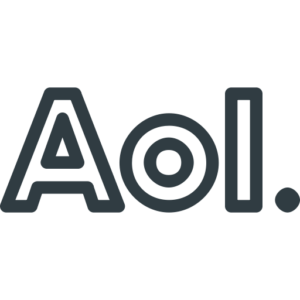Effectively analyzing your Facebook ad performance can make or break your social media marketing efforts. With the right insights, you can turn underperforming campaigns into ROI powerhouses. But where do you start? This guide will walk you through everything you need to know about ad performance analysis, targeting key metrics, and adjusting strategies to optimize results.
Understanding the Importance of Ad Performance Analysis
In today’s digital landscape, businesses increasingly rely on social media advertising to reach their target audience. However, simply running ads isn’t enough. You need to analyze their performance to ensure you’re getting the best return on investment (ROI). Without this insight, you could be wasting valuable resources on ineffective ads.
Ad performance analysis helps you understand what works and what doesn’t. By examining key metrics, you can identify strengths and areas for improvement. This data-driven approach allows you to make informed decisions, optimize your campaigns, and ultimately drive better results.
Key Metrics to Track for Ads
- Click-Through Rate (CTR)
The click-through rate (CTR) measures how many people clicked on your ad compared to the number of impressions it received. A high CTR indicates that your ad is relevant and engaging to your audience. To improve CTR, focus on crafting compelling ad copy and visuals that resonate with your target market.
- Conversion Rate
Conversion rate tracks the percentage of users who completed a desired action after clicking on your ad, such as making a purchase or signing up for a newsletter. Monitoring this metric helps you evaluate the effectiveness of your ads in driving conversions. Experiment with different calls-to-action (CTAs) and landing pages to boost your conversion rate.
- Cost Per Click (CPC)
Cost per click (CPC) is the amount you pay each time someone clicks on your ad. This metric is crucial for managing your advertising budget. If your CPC is too high, consider refining your targeting options and ad quality to reduce costs.
- Return on Ad Spend (ROAS)
Return on ad spend (ROAS) measures the revenue generated for every dollar spent on advertising. A high ROAS indicates that your ad campaign is profitable. To improve this metric, focus on optimizing your ad creatives, targeting options, and bidding strategies.
- Engagement Metrics
Engagement metrics include likes, comments, shares, and reactions. These metrics help you understand how your audience interacts with your ads. High engagement rates indicate that your content resonates with your audience. Use this feedback to create more engaging ads in the future.
Tools for Analyzing Performance
- Facebook Ads Manager
Facebook Ads Manager is a comprehensive tool for creating, managing, and analyzing your ad campaigns. It provides detailed insights into key metrics, allowing you to track performance and make data-driven decisions. Use the platform’s reporting features to generate custom reports and visualize your ad performance.
- Google Analytics
Google Analytics is another powerful tool for analyzing ad performance. By integrating it with your Facebook ad campaigns, you can gain deeper insights into user behavior and conversion paths. This data helps you understand how your ads contribute to overall website traffic and conversions.
- Third-Party Analytics Tools
Several third-party analytics tools, such as Hootsuite and Sprout Social, offer advanced features for analyzing ad performance. These tools provide additional insights and integrations, helping you optimize your campaigns and track ROI more effectively.
Adjusting Strategies Based on Data
- Identify Underperforming Ads
Regularly review your ad performance data to identify underperforming ads. Look for patterns and trends that indicate which ads are not meeting your goals. Once you’ve identified these ads, analyze the data to understand why they’re underperforming.
- Experiment with New Creatives
One way to improve ad performance is by experimenting with new creatives. Test different ad formats, images, videos, and copy to see what resonates best with your audience. Use A/B testing to compare different versions of your ads and determine which performs best.
- Refine Targeting Options
Your targeting options play a significant role in ad performance. Review your audience demographics, interests, and behaviors to ensure you’re reaching the right people. Use Facebook’s advanced targeting features to narrow down your audience and improve ad relevance.
- Optimize Bidding Strategies
Bidding strategies can impact your ad performance and costs. Experiment with different bidding options, such as cost-per-click (CPC) and cost-per-impression (CPM), to find the most cost-effective approach. Monitor your results and adjust your bids accordingly to maximize ROI.
Case Studies of Successful Campaigns
1. Case Study 1: E-Commerce Success
An e-commerce company wanted to increase sales through Facebook ads. They tracked key metrics like CTR, conversion rate, and ROAS. By analyzing the data, they identified that their audience responded well to video ads showcasing product features. They also refined their targeting to focus on high-intent users. As a result, their CTR increased by 30%, and ROAS improved by 50%.
2. Case Study 2: Lead Generation Boost
A software company aimed to generate leads for their new product. They used Facebook Ads Manager to track engagement and conversion metrics. By experimenting with different ad creatives and CTAs, they discovered that offering a free trial attracted more leads. They optimized their landing pages based on user feedback and saw a 40% increase in lead generation.
3. Case Study 3: Brand Awareness Campaign
A non-profit organization wanted to raise awareness about their cause. They focused on engagement metrics, such as likes, shares, and comments. By creating emotionally compelling content and using Facebook’s lookalike audience feature, they reached a broader audience. Their engagement rates skyrocketed, leading to increased donations and support for their cause.
Conclusion
Effectively analyzing your Facebook ad performance is crucial for maximizing ROI and achieving your marketing goals. By tracking key metrics, using the right tools, and adjusting your strategies based on data, you can optimize your ad campaigns and drive better results.
Remember, the key to success lies in continuous improvement. Regularly review your ad performance, experiment with new approaches, and stay informed about industry trends. With dedication and a data-driven mindset, you can master Facebook ad performance analysis and take your marketing efforts to new heights.
Ready to elevate your Facebook ad strategy? Start by leveraging the insights and tips shared in this guide. For more personalized advice, consider consulting with a digital marketing expert. Happy advertising!









